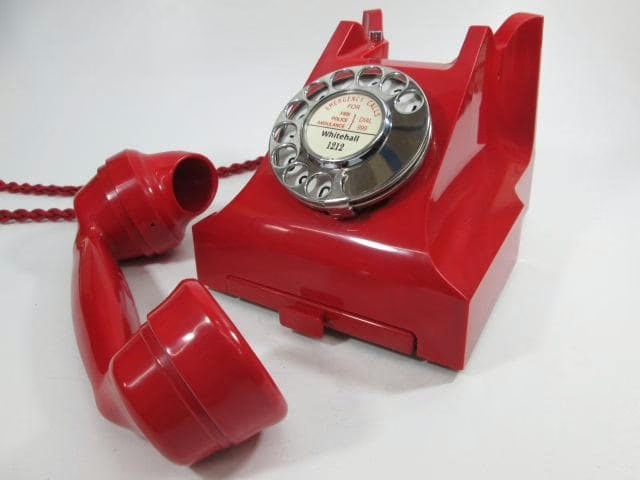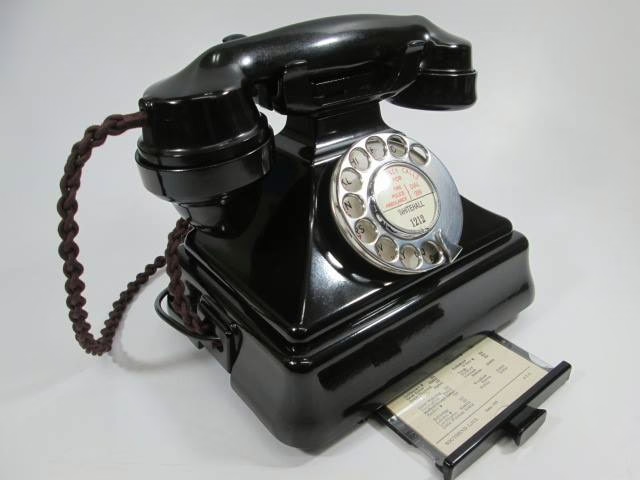How to Make Two Landline Phones Work as an Intercom
Have you ever wanted to use classic landline telephones as a simple, retro-style intercom system? Perhaps you’re a creative looking to add a touch of authenticity to an escape room, or you simply want a unique communication link between two rooms in your home or workshop. While it’s not as simple as just plugging two phones together, creating your own two-way intercom is surprisingly achievable.
This guide will walk you through the challenge and present the best, most straightforward solution available.
The Challenge: Why It's hard to get right
A standard telephone doesn’t generate its own power or dial tone. In a traditional landline system, all of this is managed by the central telephone exchange. The exchange provides the power to make the phone work, generates the dial tone, interprets the numbers you dial, and sends the ringing signal to the correct phone.
Without this central “brain,” two phones connected directly together are essentially just wires—they have no way of knowing how to power themselves, ring each other, or transmit a clear signal. For this reason, you need a small, self-contained unit that acts as a mini-exchange to handle all these functions for you.

The Simple Solution: Exchange in a Box
For most people, the most reliable and hassle-free solution is to use a dedicated, pre-built unit like the “Exchange in a Box.” This system was designed to solve this exact problem, providing all the functionality of a small telephone exchange in a compact, plug-and-play unit. It eliminates the need for any technical knowledge, messy wiring, or expensive equipment like telephone line simulators.
Key Features of this Solution:
* Effortless Setup: There’s no programming or complex configuration. You simply connect your two hard-wired UK telephones to the unit.
* Authentic UK Performance: The “Exchange in a Box” is specifically engineered to produce genuine British dial tones and that distinctive, authentic UK telephone ring.
* Versatility: It works seamlessly with both modern push-button telephones and cherished vintage rotary dial phones, or even a combination of both.
* Reliable & Robust: The unit is built for repeated use, making it ideal for professional settings like escape rooms, film sets, or busy workshops where reliability is key.

Step-by-Step Guide: Making it Work
If you choose a system like the “Exchange in a Box,” the setup process is remarkably simple.
* Gather Your Phones: Ensure you have two standard hard-wired UK landline telephones you want to use for your intercom. These can be modern or vintage models.
* Test them on a known working working landline first.
* Connect the Unit: Plug the “Exchange in a Box” low voltage power supply into a standard UK mains power socket.
* Attach the Phones: Using the supplied cables and BT style sockets, connect one phone to the first telephone port on the unit and the second phone to the second port.
* Start Communicating: That’s it! The system is now live. To use it, simply lift the handset of one phone, listen for the dial tone, and dial the number of the other phone (which is pre-set by the supplier, but you can order whatever numbers you want).

Creative Uses for Your New Intercom
Once your system is up and running, the possibilities are endless.
* Home & Workshop: Use it as a convenient communication link between a workshop and a house, a bedroom and a study, or between two floors in a large home.
* Escape Rooms: Create an immersive, tactile puzzle where players must use the phone to communicate with a friend or games master in another room etc.
* Film & Stage: Add a touch of authentic detail to a play or film set with a working telephone prop that can ring and be used for dialogue, unlike traditional telephone line simulators.
* Art & Exhibits: Create an interactive art installation or a museum exhibit where visitors can pick up the phone to communicate with an operator or another telephone in the installation.
By choosing a dedicated solution, you can easily bridge the gap between classic technology and modern needs, creating a reliable and genuinely authentic intercom system in minutes.

